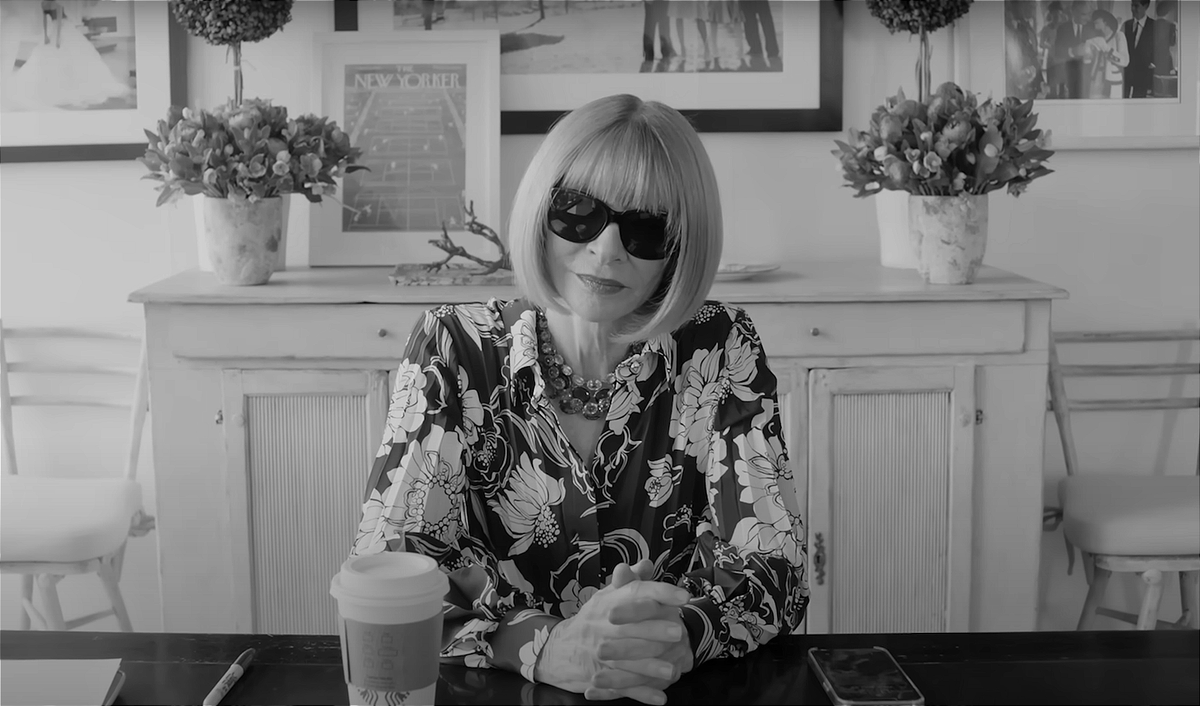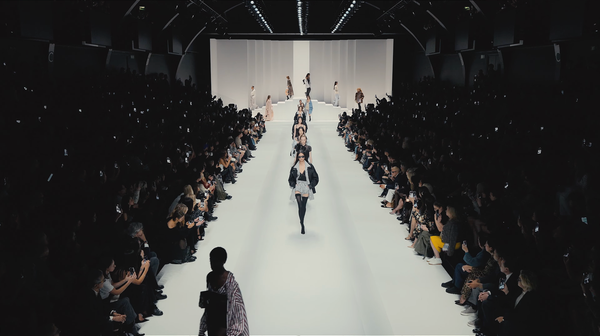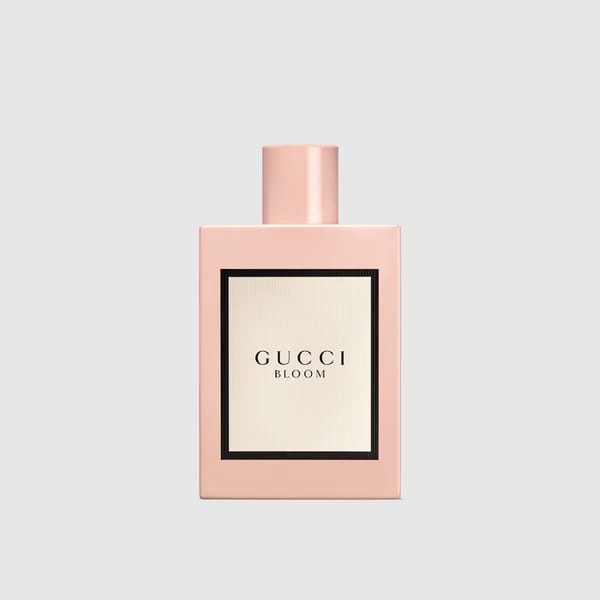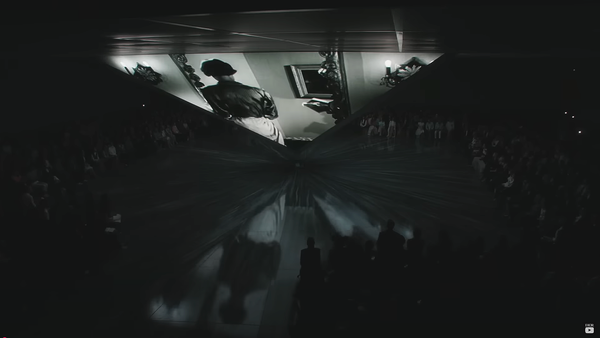CHANEL Fall-Winter 2025/26 Ready-to-Wear Show

There’s something quietly brave about Chanel’s decision to anchor this Fall-Winter collection around a theme as delicate—and as deceptively complex—as volumes and perceptions.
Follow along with the collection here.
Proportions in Play
Not only is the theme visually rich, it’s metaphorically loaded. And few brands know how to tease meaning out of material like Chanel.
Chanel stands as one of fashion’s most defining names. A symbol of luxury, simplicity, elegance, and timelessness. And in this collection, we’re reminded that even the most established voices in fashion can speak in new tones without compromising their identity.
This theme wasn’t about spectacle. It was about sensibility. Perception, if you will. And how silhouettes, structures, and even the presence of the wearer can shift depending on how they’re seen.
Venue: A Stage Built for Ideas
Set in the Grand Palais, a museum that holds history but feels distinctly modernized, the venue choice alone whispered reverence. The space almost nodded toward fashion’s own birthplace—a hybrid of an atelier, a warehouse, and a gallery. A large glass ceiling let the daylight filter in like couture-worthy lighting. It didn’t scream. It spoke softly.
The venue wasn’t just pretty. It was profound. It acted as a reminder that garments are art forms—not just made, but curated. Constructed. Sculpted. Displayed. This wasn’t a space where fashion walked. This was a space where it was exhibited.
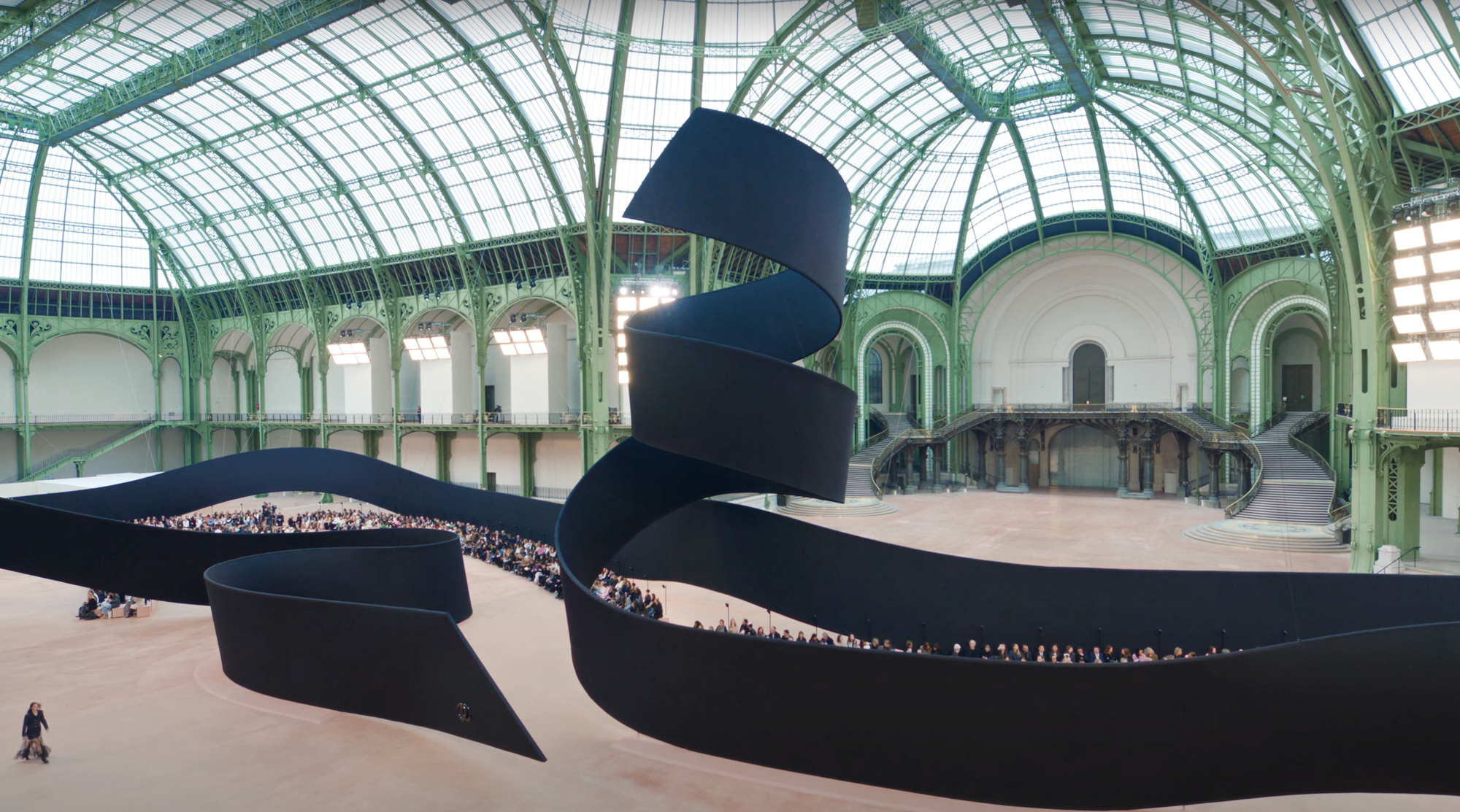
The Show Begins: Drama in Footsteps
The first steps began from afar, forcing even front-row guests to anticipate. The model’s approach became a countdown. The sound of their heels grew louder. You don’t just watch the show. You wait for it. You earn it.
Editor’s Note:
There's a metaphoric thrill in a long runway walk—and I'm obsessed with it.
The sharp violin introduction immediately matched the energy of the garments: sheer, sweeping pieces with body and tension. Then came a sudden pivot—a drop into a house beat—and with it, a signal: this wasn’t just elegance. It was contemporary. Uplifted—even playful.
There was richness in the models' presence. No over-acted expressions. No attempt at theatrics. Just faces of memory. The models carried themselves like they had lived in these garments. Or perhaps like they were part of the garments themselves. Dystopian. Dramatic. Strangely peaceful.
Favorite Look #1 — [16/71]
A soft, standout moment. A blue tweed tunic dress with black ruffled detailing and oversized golden wrist cuffs. It felt decisive. Confident. Even the touches of the vibrant color palette gave it a slight ’90s flair—though the sneaker-style pump fell slightly short for me.
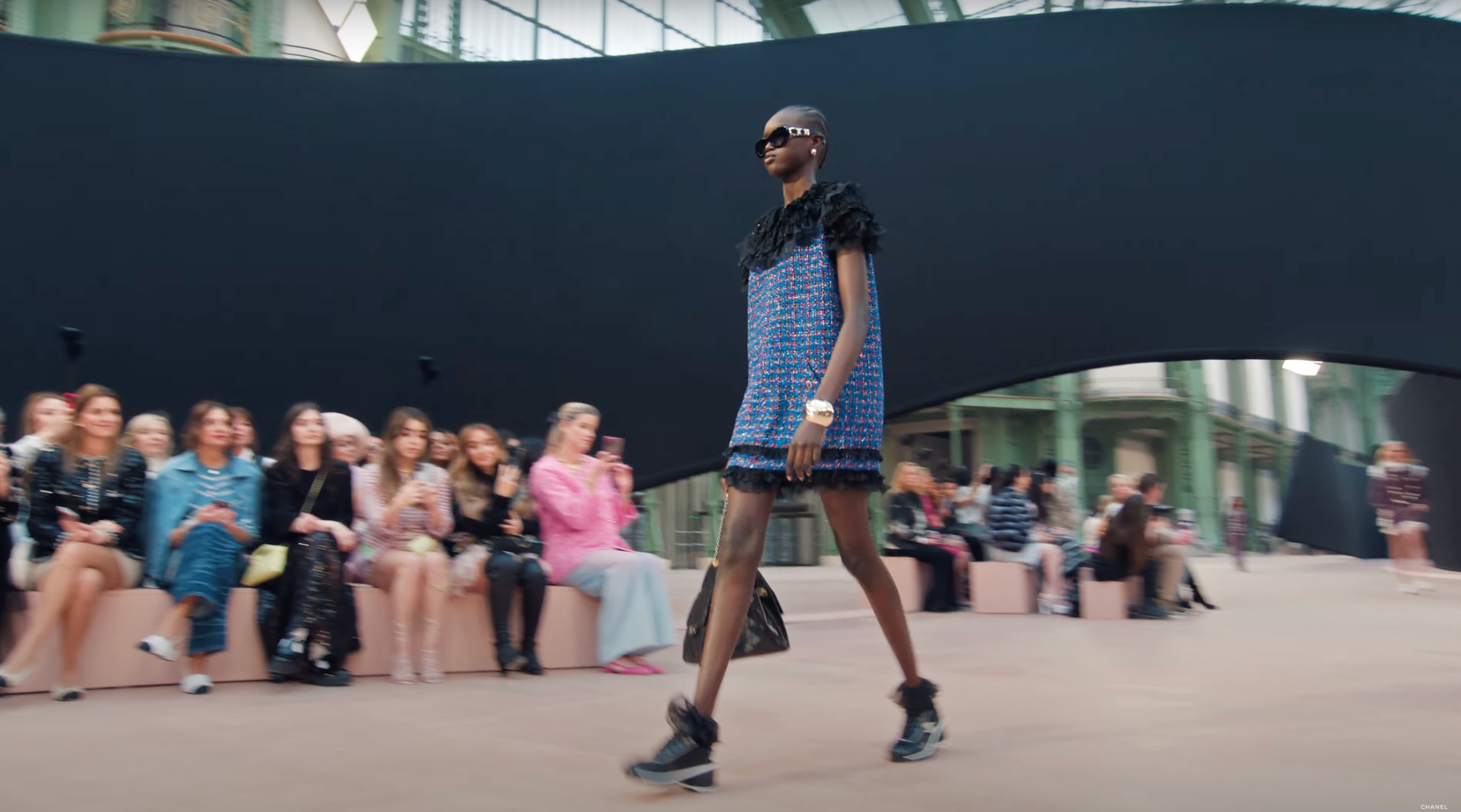
Favorite Look #2 — [22/71]
An immediate, absolute masterpiece. Top-to-bottom tweed in bright, luxurious Chanel red and stunning white, with one of the most functional-yet-simplistic rounded top hats. The eight visible pockets and elongated gold-button trail pulled the entire look into a complete sentence. Detailed with different volumes. Possibly one of the best Chanel constructions ever.
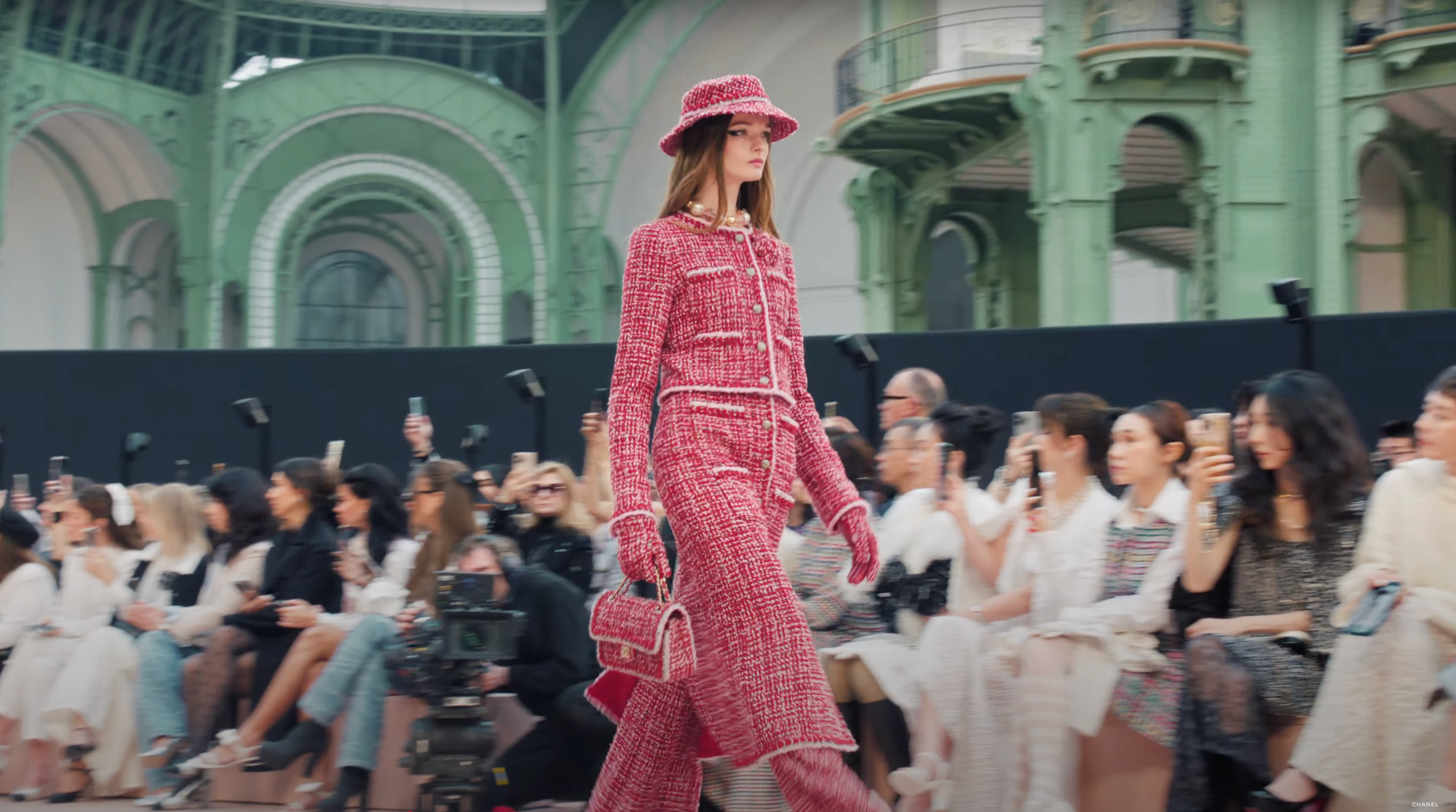
The music then evolved like a playlist curated for an emotional arc—moving from orchestra to house to now, vintage RuPaul runway vibes. This created a slight disconnect from some of the garments’ narratives, but still kept the energy up.
The Twin Look Moment
A clever staging move presented two models side-by-side in reverse-colored pocket dresses—one black, one cream. Not only a play on symmetry and contrast, but a brilliant commercial gesture. Which will Chanel shoppers prefer? It’s a visual choice, and a smart one.
Weak Look #1 — [32/71]
A full black latex ensemble with a belly-bow detail that missed the mark. The concept may have been risky, but the execution leaned too far into novelty. A restructure placing the second bow at the chest, with a contrasting cream corset beneath and tiny black bows cascading down, might have redefined the piece into something sensual, avant-garde, and memorable. Instead, it felt clownish and forgettable.
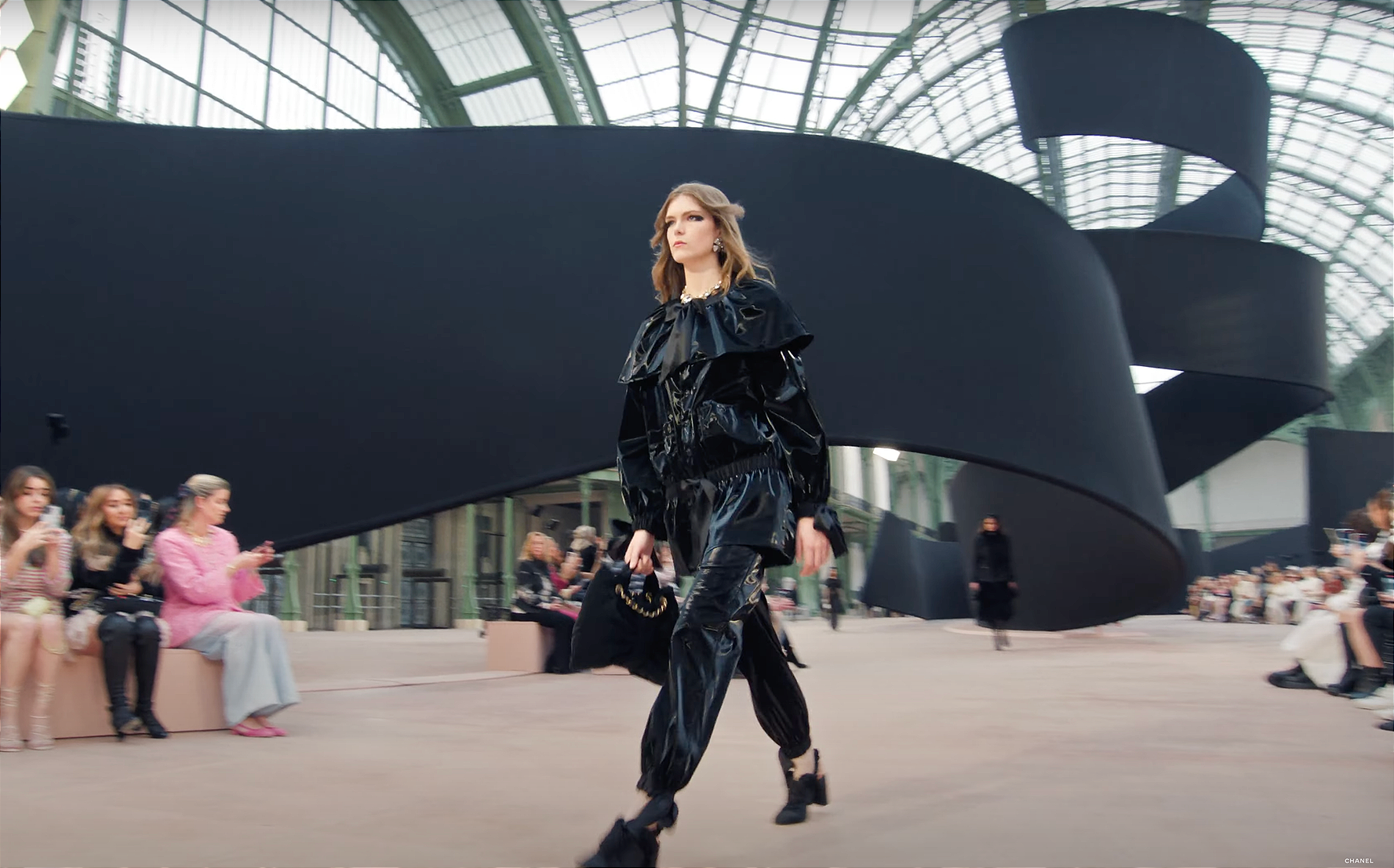
Weak Look #2 — [44/71]
An exaggerated, oversized Chanel pearl bracelet as a sewn-in prop—bold, but ineffective. The piece became more of a parody than a purpose. Had the pearls been reduced in scale, layered tastefully into thirds, it might have carried better resonance. But it fell short in the rendition of usable proportions.
As the show continued, I found a few missed chances—like small hats—that would have been a delightful twist on scale if incorporated. The large accessories dominated too much. They could have benefited from a few contrasting miniatures to reinforce the volume theme with more sophistication.
Editor’s Note: From the very first look to the middle of the show, Chanel reminds us that it doesn’t just sell product—it sells perception. Their command over tweed, their consistent control over silhouette, and their respect for craftsmanship all prove the brand’s fashion intellect.
Look 50/71 quietly reinforced this. A denim-inspired button-down and sheer flowing pants with bold silver accessories. The model’s intentional eye contact with the camera? Tension-filled. Powerful. A moment that felt alive—and something I deeply appreciated.
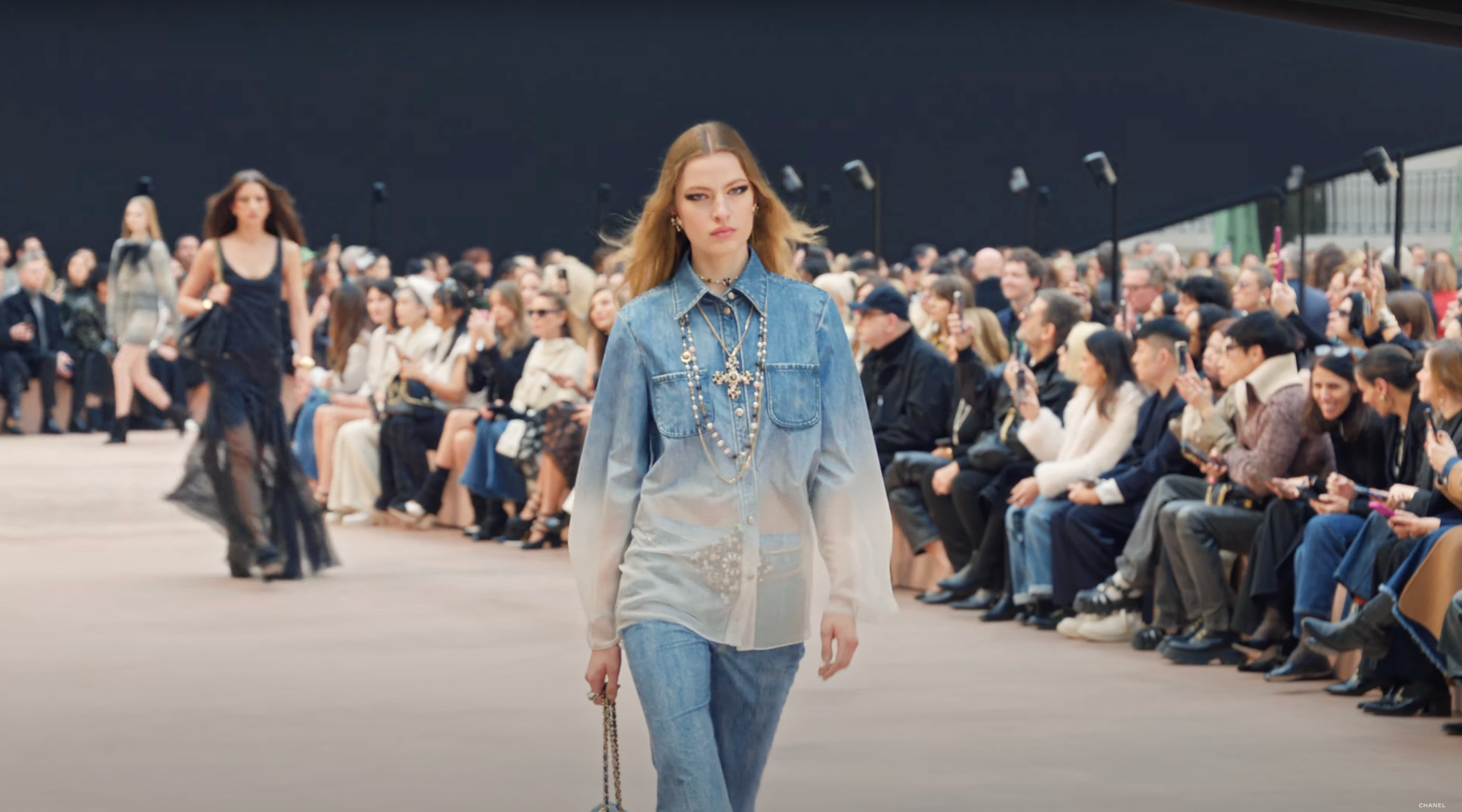
Favorite Look #3 — [54/71]
Soft, structured, and pure. An aquatic-inspired pink tweed jacket and bias-cut skirt, paired with a mini silver purse and sleek belly chain. The wide necklace layered in pink, silver, and shimmer tones pulled the whole story together. Balance, not chaos. Proportion, not exaggeration.
There’s a type of proportion that doesn’t need to involve anything more than the body itself. This is what Chanel was achieving—proportional simplicity in the body. It was the most relatable, wearable interpretation of the show’s main thesis. And a well-executed one.
The mint green knitwear duo followed soon after. Intelligent color choices. Too playful and childlike in any other shade—but here, they whispered sophistication with joy.
Conclusion: What Chanel Always Was, Still Is
As the final moments arrive, the music shifts once again. This time to a tone of exploration. Perhaps an attempt to signal a return to roots, a soft sign-off?
But as the garments leave and the journey just discovered begins to fade in memory, what stays behind is this:
This collection didn’t reinvent Chanel. It reaffirmed it.
We saw reassertion—a brand telling us it doesn’t need to chase drama to remain desirable. Just a handful of statement pieces scattered throughout. The rest? Built to live. Built to last. Like Chanel.

[Previous Revision] - Anna Wintour—The Exit That Redefines Vogue
